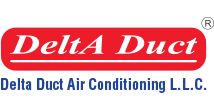Let’s look at a few guidelines on the dryer venting system to prevent dryer fire hazards
- The diameter of all dryer ducting should be at least 4″. Clean, clear, frictionless ducts improve airflow efficiency, shorten drying times, extend the life of garments, and save money on electricity costs.
- Examine the dryer’s termination port as well as the wall or roof cap. Keep an eye out for bird nests or obstructed entrances. Most essential, feel the air leaving the vent for correct departure velocity and inspect or feel the duct’s inside walls.
- You should get your exhaust ducts cleaned if you feel they are clogged or partially clogged. Cleaning or inspecting dryer vents enhances safety and efficiency and should be done every 6-12 months depending on the venting circumstances.
- Clothes that have been discolored by gas, cooking oil, cleaning agents, or other dangerous chemicals or substances require extra attention. To avoid volatile chemicals, wash soiled garments many times before hanging them to dry. If you must use a dryer, put it to the lowest heat setting and run it through a cycle that includes a cool-down time.
- Check for kinks or crushes in your flex transition hose. The amount of space behind your dryer should be sufficient to allow the flex transition hose to bend with little deflection and constraints.
- The venting of the dryer must be independent of any other systems (chimneys or exhaust vents)
- The foil or aluminum flexible duct should be used to connect the dryer to the wall outlet (most preferred). Plastic and vinyl should not be used.
- Metal tape should be used to secure joints (not duct tape). Rives and screws should not be used in the joints or anywhere else in the duct since they stimulate lint gathering.
- Dryer venting must be terminated to the outside with a backdraft damper-equipped hood or roof cap. Metal screening for small orifices should not be included in the hood or roof cap since it will collect lint and quickly block the hole. The hood should be pointed down with 12 inches of room between the bottom of the hood and the ground or other barrier.
Tensed? Don’t be! The Delta Duct dryer vent ducts are manufactured adhering to all the safety guidelines for your safety.
Tags: dryer vent ducts
